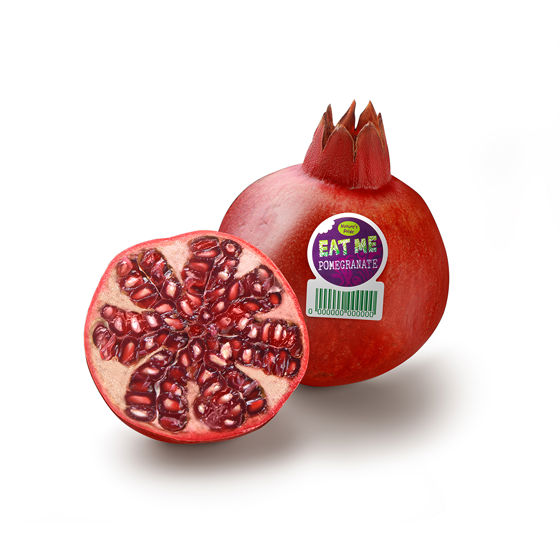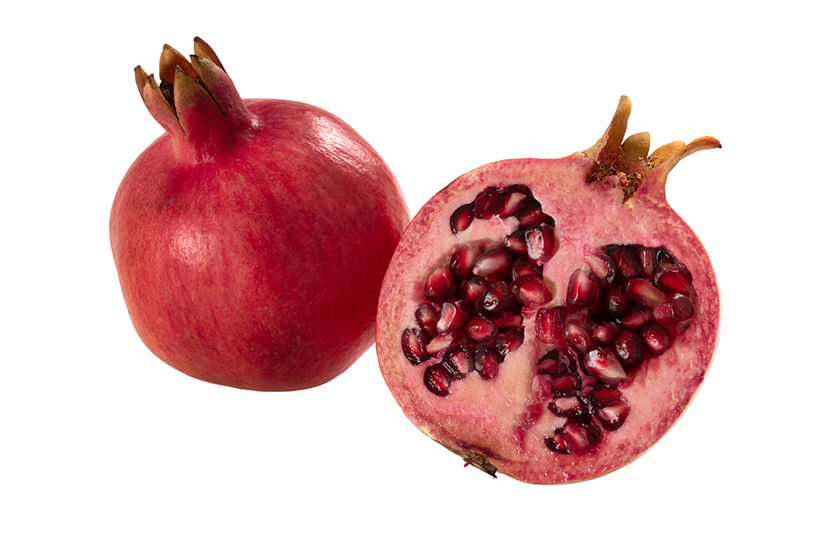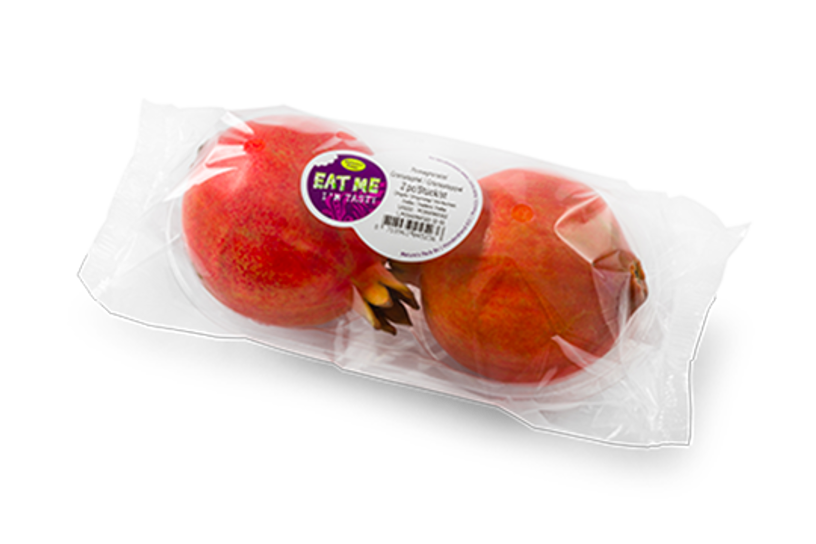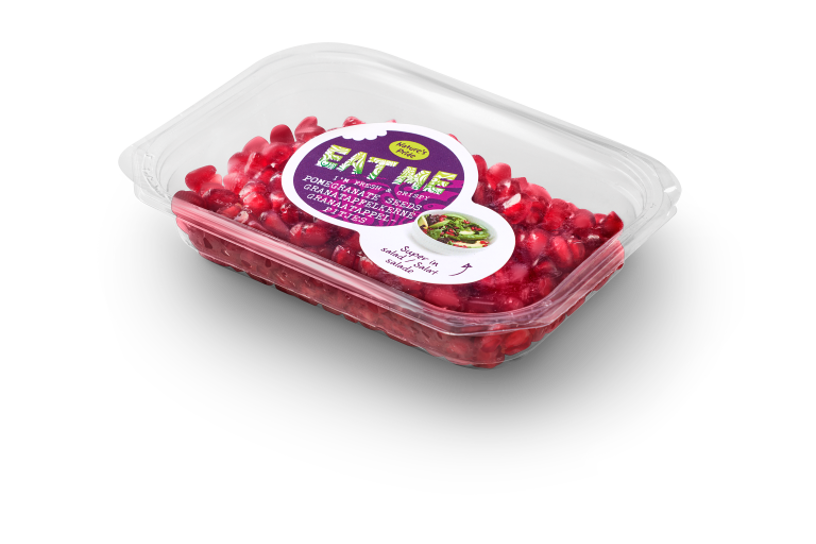Availability
- Jan
- Available
- Feb
- Available
- Mar
- Available
- Apr
- Available
- May
- Available
- Jun
- Available
- Jul
- Available
- Aug
- Available
- Sep
- Available
- Oct
- Available
- Nov
- Available
- Dec
- Available
Storage advice
- Transport and storage: Transport pomegranates under the same conditions as they should be stored: refrigerated, at a temperature between 6 and 8˚C.
- Shop: The regular fresh produce shelf is the perfect spot for pomegranates.
Variety
Our pomegranates are grown in:
Peru, South Africa, Egypt, India, Israel, Spain and Greece
Growing and harvesting
At the grower's
It takes 7 to 8 years before pomegranate shrubs are ready for harvesting. The shrubs continue to bear fruit for 25 years. The pomegranate fruit indicates when it is time to be removed from the tree: the husk changes colour. The grower also checks the Brix level and acidity to make sure.
Once harvested, the pomegranates go to the packing station to be rinsed, dried, sorted for size and weight and packed. The entire process is strictly monitored to ensure that only the finest and tastiest pomegranates make it to the shops under Nature's Pride's EAT ME label. The peeled seeds of the pomegranate can also be ordered.
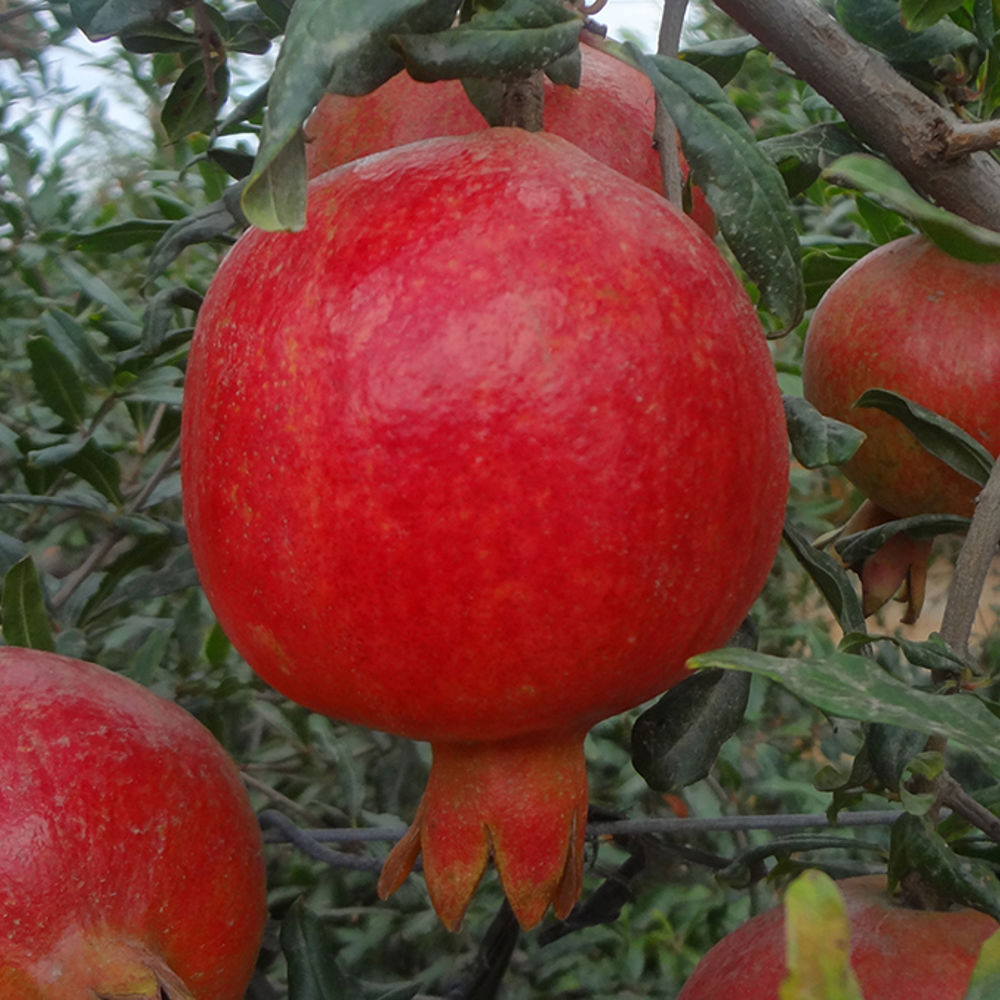
Packaging options
- Packed per 2 pieces, per package of 10 x 2 pieces
- Loose per 3.5 kg package
The peeled seeds of the pomegranate can also be ordered in a variety of packaging options.
They make for a beautiful display in your cold store: pomegranates in EAT ME packaging. Of course, using your private label is also possible.
Recipes & preparation tips
After cutting open the pomegranate, the edible seeds can be carefully removed from the membrane. There is no shortage of creative recipes with pomegranate: from a salad with pomegranate, mango and arugula to hasselback sweet potatoes. The sweet and sour taste also comes into its own in juices. The cheerful red seeds work well as a garnish in desserts and cakes.
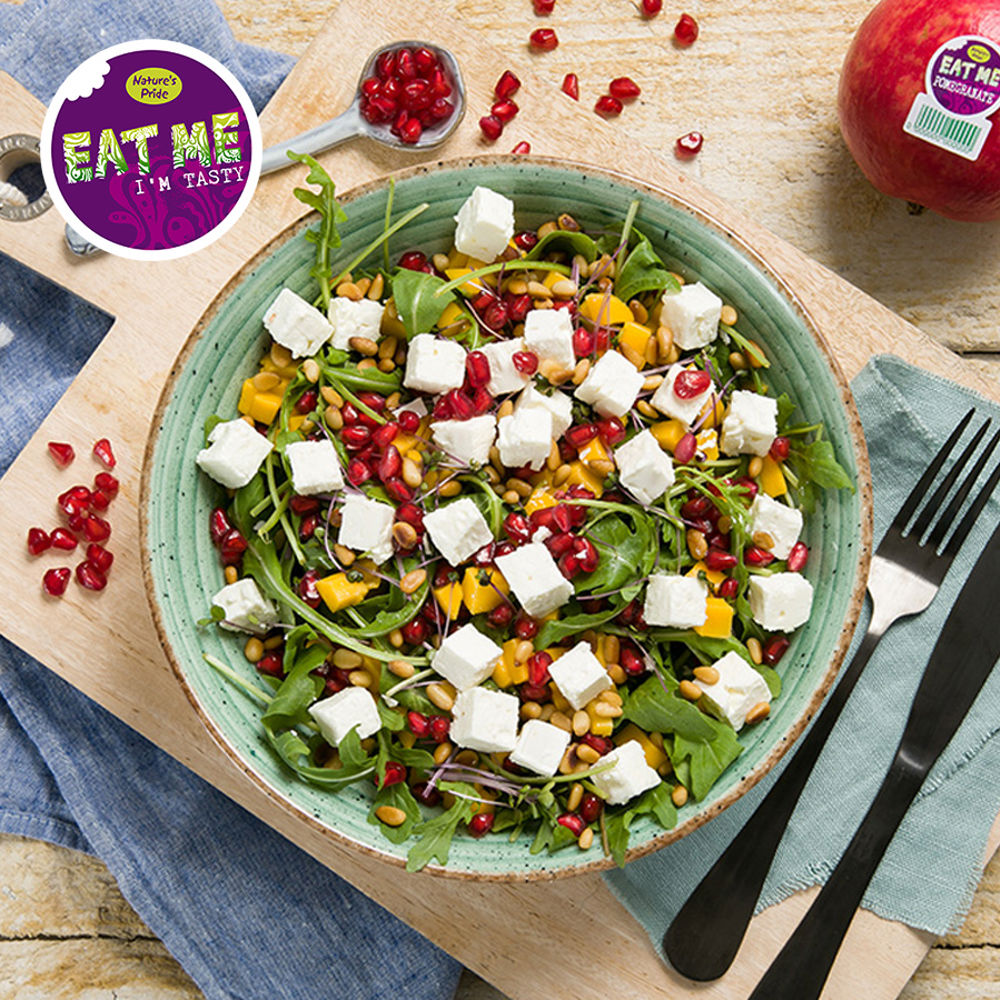
Get in touch
We are happy to talk to you
- Select what applies...
